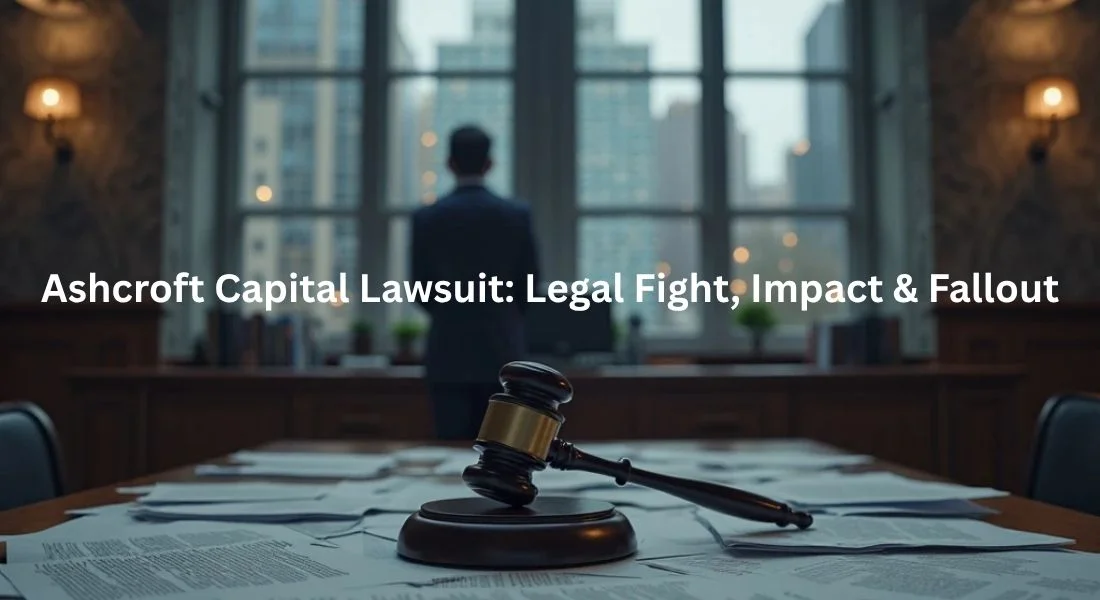The name Ashcroft Capital has long been synonymous with large-scale, value-add multifamily investments across the United States. However, recent legal challenges have cast a spotlight on the firm, prompting questions from investors, industry observers, and current residents. This article provides a comprehensive, humanized breakdown of the Ashcroft Capital lawsuit, detailing the allegations, the company’s response, and what it means for all parties involved as of 2025.
Understanding the Core of the Ashcroft Capital Lawsuit
The Ashcroft Capital lawsuit is not a single, monolithic case but rather a series of legal challenges that have emerged. The most significant among them is a class-action complaint filed on behalf of tenants across several Ashcroft-owned properties. The suit alleges systematic violations of tenant protection laws, primarily focusing on improper fee structures and maintenance issues.
The plaintiffs argue that the company’s aggressive value-add strategy—which often involves acquiring properties, renovating units, and raising rents—was executed in a manner that prioritized investor returns over tenant well-being and legal compliance.
Key Allegations in the Legal Challenge
The lawsuit against Ashcroft Capital hinges on several precise allegations. Understanding these points is crucial to grasping the full scope of the legal battle.
-
Excessive and Unlawful Fees: A central claim is that Ashcroft properties charged tenants a barrage of non-refundable fees that were not adequately disclosed at lease signing. These allegedly included excessive administration fees, utility billing fees (sub-metering), and amenity fees that plaintiffs argue were unjustified and illegal under state-specific landlord-tenant laws.
-
Deceptive Trade Practices: The lawsuit contends that the fee structure was deliberately opaque, misleading prospective tenants about the true cost of renting a unit. This forms the basis for allegations of deceptive business practices.
-
Withholding Security Deposits: Similar to the fee allegations, the suit claims that the company routinely withheld security deposits for unwarranted reasons or charged for normal wear and tear, which is often prohibited by law.
-
Failure to Maintain Habitable Conditions: Some complaints detail that while rents were increased for renovated “luxury” units, essential maintenance and repairs in common areas or during tenancy were neglected, creating potential health and safety issues.
Ashcroft Capital’s Response and Defense
In response to the Ashcroft Capital lawsuit, the firm has mounted a vigorous defense. Their public statements and legal filings emphasize a commitment to ethical operations and compliance.
The company denies any systematic wrongdoing, characterizing the lawsuit as an opportunistic action that misrepresents standard industry practices. Ashcroft Capital maintains that all fees were clearly outlined in lease agreements and were necessary for the services provided. They assert that their renovation programs have significantly improved housing quality and property values for residents and investors alike. The legal defense is expected to argue that the plaintiffs’ claims are without merit and are an attempt to litigate what are essentially contractual disputes.
Implications for Investors and the Multifamily Market
For investors in Ashcroft Capital’s funds, the lawsuit introduces a layer of uncertainty. While the firm has a history of strong returns, any major legal proceeding carries potential financial risk, including legal costs and potential settlements. However, it is critical to note that as of 2025, the lawsuit is in its early stages, and no liability has been established.
On a broader scale, the Ashcroft Capital lawsuit is being closely watched by the entire multifamily real estate sector. It reflects a growing wave of tenant activism and increased regulatory scrutiny on fee structures and landlord responsibilities. The outcome could set a precedent, forcing property managers and investment firms nationwide to audit their leasing practices and fee transparency more rigorously.
Conclusion: A Situation in Development
The Ashcroft Capital lawsuit is a complex developing story. It represents a clash between ambitious investment strategies and tenant rights advocacy. For residents, it highlights the importance of understanding lease agreements and knowing your rights as a tenant. For investors, it underscores the need for thorough due diligence, not just on financial returns but also on the operational and ethical practices of their investment managers.
As the legal process unfolds through 2025, the industry awaits a resolution that will likely have lasting implications for how multifamily assets are managed and how the relationship between large investment landlords and their tenants is defined. All parties are advised to seek information from official legal filings and statements from the involved parties.
